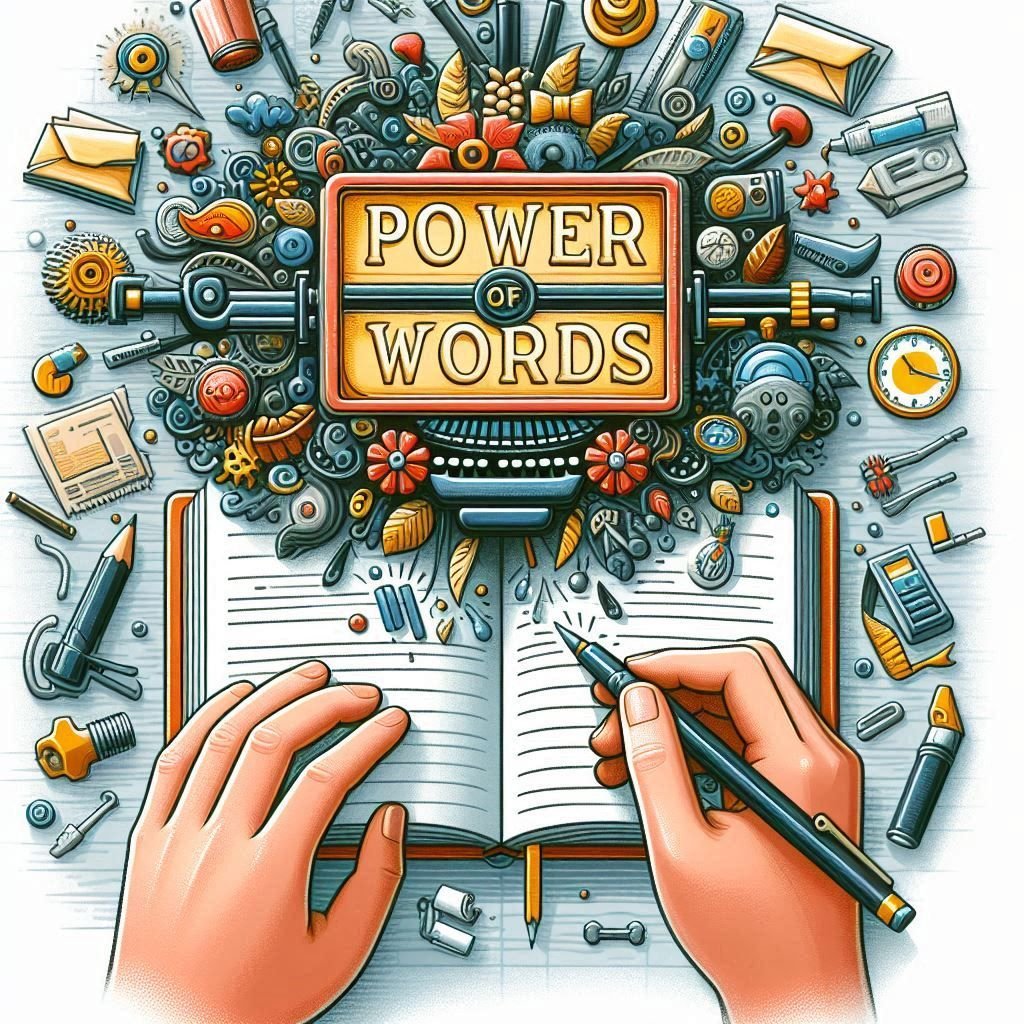Microsoft Word Formatting Guide: Make Your Documents Stand Out
Introduction
Microsoft Word is a powerful tool for creating professional documents. Understanding its formatting features can transform a simple document into a polished masterpiece.
1. Mastering Basic Formatting
The foundation of any well-formatted document lies in mastering basic formatting techniques. This includes adjusting font styles, sizes, and colors. Use bold, italic, and underline options to highlight key points.
2. Utilizing Styles and Themes
Styles and themes provide consistency throughout your document. Apply predefined styles to headings, subheadings, and body text to ensure a cohesive look. Explore the variety of themes available to match your document’s purpose.
3. Structuring with Headings
Headings are essential for document structure and navigation. Use Heading 1 for main sections, Heading 2 for subsections, and so on. This not only improves readability but also allows for easy navigation using the navigation pane.
4. Enhancing Readability with Lists
Lists are great for breaking down information into manageable parts. Use bullet points for unordered lists and numbers for ordered lists. Customize list styles to fit the document’s theme.
5. Adding Visual Appeal with Images and Tables
Incorporate images and tables to add visual interest and clarity. Use the insert image and insert table features to include relevant visuals. Ensure images are high-quality and tables are neatly formatted.
| Feature | Description |
|---|---|
| Styles | Predefined formatting options for text. |
| Themes | A set of unified design elements. |
6. Streamlining Document Navigation
Enhance navigation with hyperlinks and bookmarks. Link to sections within the document or external resources to provide additional context and ease of access.
7. Reviewing and Proofreading
Ensure your document is error-free by using Word’s review tools. Utilize spelling and grammar checks, and consider using the read-aloud feature to catch errors.
Introduction
In the digital age, creating documents that are easy to read and engaging is crucial. One effective way to enhance readability is by using lists. This article explores the benefits of lists and provides tips on how to make your documents stand out using this simple yet powerful formatting tool.
Benefits of Using Lists
Lists help to organize information clearly, making it easier for readers to scan and comprehend content. They break down complex information into digestible chunks, which can improve retention and engagement. According to Nielsen Norman Group, people tend to skim online content, and lists cater to this reading behavior.
Types of Lists
There are various types of lists you can use, including bullet points, numbered lists, and checklists. Each type serves a specific purpose and can be used to emphasize different aspects of your content. For instance, Grammarly suggests using bullet points for unordered information and numbered lists for sequential steps.
Best Practices for Using Lists
To maximize the effectiveness of lists, keep the following best practices in mind:
- Use parallel structure: Ensure each list item follows the same grammatical pattern.
- Keep it concise: Limit each list item to one sentence or a short phrase.
- Use relevant keywords: Incorporate keywords to improve SEO and draw reader attention.
For more detailed guidance, check out this HubSpot guide on writing effective lists.
Examples of Effective Lists
To illustrate the power of lists, consider the following examples:
| List Type | Example |
|---|---|
| Bullet Points | • Enhance readability • Break down information • Highlight key points |
| Numbered List | 1. Gather data 2. Analyze trends 3. Make informed decisions |
These examples show how lists can make your content more engaging and easier to follow. For further reading, explore this Scribbr article on list grammar rules.
Structuring with Headings
Introduction to Headings
Using headings effectively is crucial for enhancing the readability and SEO of your content. Properly structured headings help both readers and search engines understand the hierarchy and flow of your document.
Importance of Headings
Headings break down content into manageable sections, making it easier for readers to scan and digest information. They also signal to search engines which parts of your content are most important. For instance, an article on SEO would benefit significantly from clear and descriptive headings.
Best Practices for Headings
To optimize your content, use a clear hierarchy of headings, from H1 to H6, to organize your text. Ensure each section has a relevant heading and avoid overloading your text with keywords. For more detailed guidance, refer to this WordStream guide on on-page SEO.
Types of Headings
There are several types of headings you can use, such as:
| Heading Type | Purpose |
|---|---|
| H1 | Primary heading for the main topic |
| H2 | Subheadings for major sections |
| H3 | Sub-sections under H2 |
| H4 | Further subdivisions |
| H5 | Niche details within H4 |
| H6 | Smallest, most specific sections |
Creating SEO-Friendly Headings
Crafting headings that are both descriptive and keyword-rich can improve your content’s visibility on search engines. Use tools like Ahrefs to find relevant keywords and incorporate them naturally into your headings.
Common Mistakes to Avoid
Avoid common mistakes such as using multiple H1 tags on a single page, stuffing headings with keywords, or making headings too vague. For more tips on avoiding SEO pitfalls, visit this Neil Patel blog post.
Introduction
The rise of remote work has transformed the way businesses operate and employees conduct their daily tasks. As companies and workers adapt to this new paradigm, it’s essential to understand both the benefits and challenges associated with remote work.
Pros of Remote Work
1. Increased Flexibility
One of the most significant advantages of remote work is the increased flexibility it offers. Employees can set their schedules, allowing for a better work-life balance and the ability to manage personal commitments more effectively.
2. Cost Savings
Remote work can lead to substantial cost savings for both employees and employers. Employees save on commuting, meals, and work attire, while companies can reduce expenses on office space and utilities.
3. Access to a Broader Talent Pool
Companies can tap into a broader talent pool when they embrace remote work. This allows them to hire the best candidates regardless of geographical location, leading to a more diverse and skilled workforce.
4. Enhanced Productivity
Many studies suggest that remote workers are often more productive than their in-office counterparts. Without the distractions of a traditional office environment, employees can focus better and achieve more.
5. Environmental Benefits
Reduced commuting translates to fewer carbon emissions, contributing to a positive environmental impact. Remote work supports sustainability efforts and helps reduce the overall carbon footprint.
Cons of Remote Work
1. Isolation
Remote work can lead to feelings of isolation and loneliness. Without the social interactions of an office, employees may struggle with a sense of belonging and community.
2. Distractions at Home
While the home environment can be more comfortable, it can also be full of distractions. Family members, pets, and household chores can interrupt work, making it challenging to maintain productivity.
3. Overworking
The boundary between work and personal life can blur, leading to overworking. Employees may find it difficult to switch off and may work longer hours than they would in a traditional office setting.
4. Communication Challenges
Effective communication can be a challenge in a remote work setup. The lack of face-to-face interaction can lead to misunderstandings and a lack of collaboration.
5. Technological Issues
Reliance on technology means that technical issues can significantly disrupt work. Poor internet connectivity, software glitches, and cyber security threats can pose challenges to remote workers.
1. What are the main benefits of remote work?
The main benefits of remote work include increased flexibility, cost savings, access to a broader talent pool, enhanced productivity, and environmental benefits. These advantages help both employees and employers by providing better work-life balance, reducing expenses, and promoting sustainability. For more details, check out this Forbes article on the rise of remote work.
2. How does remote work improve work-life balance?
Remote work improves work-life balance by allowing employees to set their own schedules, thus enabling them to better manage personal commitments and work responsibilities. This flexibility helps reduce stress and improve overall well-being. Learn more from this Business News Daily article.
3. What are the cost savings associated with remote work?
Remote work can lead to significant cost savings for both employees and employers. Employees save on commuting, meals, and work attire, while companies reduce expenses on office space and utilities. This article from The Balance Careers explains more.
4. What challenges do remote workers face?
Remote workers can face several challenges, including feelings of isolation, distractions at home, overworking, communication issues, and technological problems. These challenges can affect productivity and well-being if not addressed properly. This New York Times article provides tips on overcoming these challenges.
5. How can remote work lead to overworking?
Remote work can lead to overworking because the boundary between work and personal life can blur. Without a clear distinction, employees may find it difficult to switch off and may work longer hours than they would in a traditional office setting. Read more about this in this Forbes article.
6. What are the environmental benefits of remote work?
Remote work reduces the need for commuting, leading to fewer carbon emissions and a positive impact on the environment. This supports sustainability efforts and helps reduce the overall carbon footprint. Find out more in this World Economic Forum article.
7. How can companies address the communication challenges of remote work?
Companies can address communication challenges by utilizing various communication tools, setting clear expectations, and fostering a culture of open and transparent communication. Regular virtual meetings and collaboration platforms can help bridge the communication gap. This Harvard Business Review article offers insights on effective remote communication.
8. What technological issues do remote workers face?
Remote workers rely heavily on technology, and issues like poor internet connectivity, software glitches, and cybersecurity threats can disrupt work. Ensuring reliable technology and providing support for remote employees are crucial for smooth operations. Learn more from this BBC article.
Introduction
In the digital age, disclaimers and caution notices play a crucial role in protecting businesses and individuals from legal liabilities and misunderstandings. This article explores the importance, types, and best practices for creating effective disclaimers and caution statements.
What is a Disclaimer?
A disclaimer is a statement that specifies the limitations of liability and the scope of responsibilities of the information or services provided. It helps to inform users about the extent to which the provider is responsible for any damages or issues that may arise. For a detailed overview, visit this LawDepot article.
Types of Disclaimers
1. General Disclaimer
A general disclaimer is a broad statement that covers the basic aspects of liability and limitations. It is often used on websites to cover various aspects of content and services. Check out this WebsitePolicies article for more information.
2. Legal Disclaimer
Legal disclaimers provide specific information regarding the legal implications of using a website or service. These disclaimers are essential for limiting legal responsibilities. Learn more from this TermsFeed article.
3. Medical Disclaimer
Medical disclaimers are crucial for websites providing health-related information. They inform users that the content is not a substitute for professional medical advice. This Everyday Health disclaimer offers a great example.
4. Affiliate Disclaimer
Affiliate disclaimers disclose relationships with affiliate partners and commissions earned from links. This ensures transparency and compliance with legal requirements. For more details, visit this Affiliate Marketing disclosure policy.
5. Earnings Disclaimer
Earnings disclaimers are used to clarify that any income claims are not guaranteed and can vary. This protects businesses from potential legal issues related to false advertising. Refer to this BigCommerce article for further reading.
What is a Caution Notice?
A caution notice is a warning that alerts users to potential risks or dangers associated with a product, service, or action. These notices are vital for ensuring user safety and preventing harm. For more insight, see this Safety and Health Magazine article.
Types of Caution Notices
1. Product Safety Notices
Product safety notices inform users about potential hazards associated with using a product. These notices are essential for consumer protection and legal compliance. More details can be found in this FTC article.
2. Health and Safety Warnings
Health and safety warnings are crucial for workplaces, public spaces, and products that may pose risks. They help prevent accidents and ensure safety. This OSHA guide provides examples of effective health and safety warnings.
3. Financial Risk Warnings
Financial risk warnings alert users to potential financial losses associated with investments or financial products. These warnings are critical for informed decision-making. For more information, visit this SEC investor alert.
4. Cybersecurity Alerts
Cybersecurity alerts warn users about potential cyber threats and vulnerabilities. These alerts help protect personal and organizational data from breaches. Read more in this CISA alerts page.
Best Practices for Creating Disclaimers and Caution Notices
1. Be Clear and Concise
Ensure that disclaimers and caution notices are written in clear and concise language, making them easily understandable to users. This PlainLanguage.gov guide offers tips on clear writing.
2. Use Visual Cues
Incorporate visual elements such as icons, bold text, and colors to highlight important information and draw attention to warnings. See examples in this WebFX article.
3. Update Regularly
Regularly review and update disclaimers and caution notices to ensure they remain relevant and compliant with current laws and regulations. Learn more from this TermsFeed article.
4. Seek Legal Advice
Consult with legal professionals to ensure that your disclaimers and caution notices are legally sound and effectively mitigate risks. For advice, refer to this Rocket Lawyer guide.





